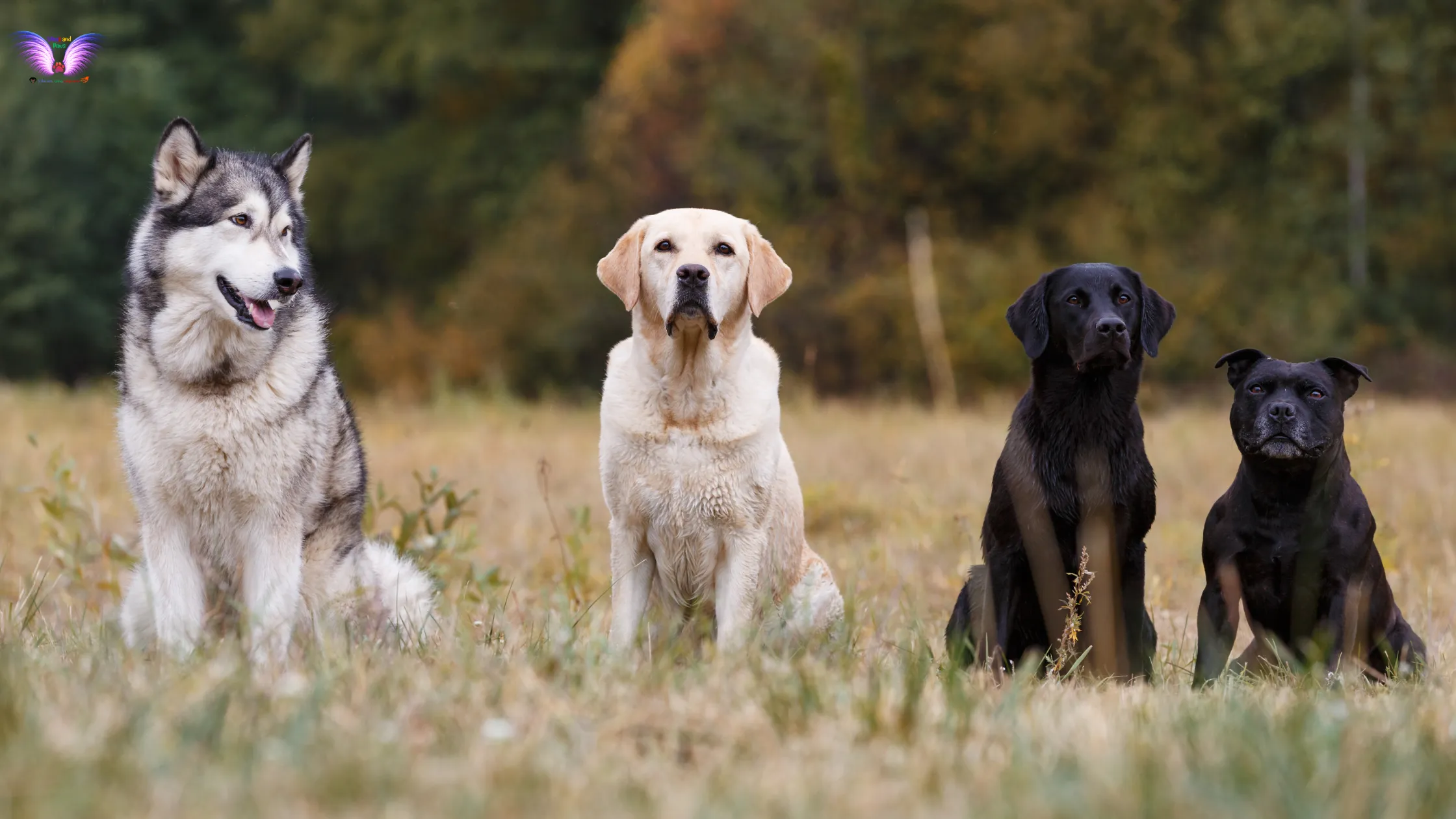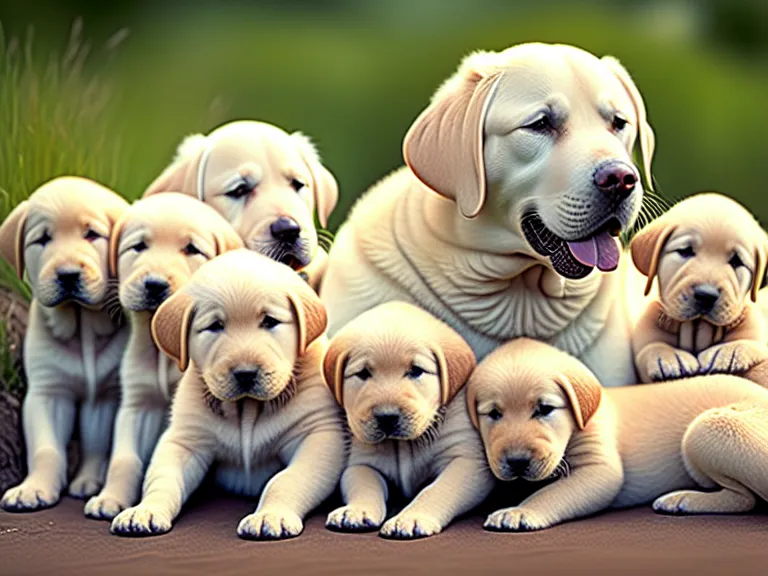

Training your furry friend to stay at home alone can be quite a challenging task, especially if you're new to obedience training. However, with the right techniques and patience, it can be achieved successfully. As a professional dog trainer, I've seen pet parents struggle with this issue time and again. That's why I'm excited to share my expertise on how to train your dog at home, so they don't panic when you have to leave them alone for an extended period of time.
In this article, we’ll cover some effective techniques that will help both you and your furry buddy feel more comfortable about staying home alone without any unwanted behavior or damage in the house—let’s get started!
Start With Basic Obedience Training
Training your dog to stay at home alone starts with basic obedience training. Teach your furry friend commands such as sit, stay, come and go. Follow these steps to begin:
Start with the basics: Begin by teaching your dog some basic commands, such as “sit” and “stay”. This will help establish a foundation for more advanced training.
Establish a love of treats: Use positive reinforcement techniques when training your dog. Treats are an excellent way to reward good behavior and encourage your pup to try new things.
Practice leash training: Leash training can help teach dogs how to walk calmly on a leash without pulling or jumping.
Teach come & go: The “come” command is crucial when it comes time to call your dog back from being outside. Teaching this command early on can prevent problems down the line.
By starting with these basic obedience commands, you'll be well on your way toward teaching your dog how to behave while you're away from home.
Start With Sit & Stay:
One of the most basic commands you can teach your dog is to sit and stay. This command is used as a foundation for many other training behaviors. Start by getting your dog's attention using their name or a clicker. Next, show them a treat while slowly moving it over their head towards the back of their body.
As they follow the treat with their nose, they should naturally move into a sitting position. Reward them immediately when they are in this position using positive reinforcement such as praise or treats.
Once they have mastered sitting, start increasing the duration of time that they must remain in the seated position before being rewarded. Eventually, work up to teaching them to stay while you walk away or leave the room for short periods, like 10–15 seconds.
Remember that patience and consistency are key when training your dog at home!
Teach your dog to sit and stay as a foundation for other training behaviors.
Use their name or a clicker to get your dog’s attention, then show them a treat while moving it over their head towards the back of their body.
Reward them immediately using positive reinforcement such as praise or treats when they are in a seated position.
Increase the duration of time they must remain seated before being rewarded.
Eventually, work up to teaching them to stay while you walk away or leave the room for short periods.
Patience and consistency are key when training your dog at home.

Establish A Love Of Treats
Training your dog to stay at home alone can be a daunting task, but by establishing a love of treats, you'll make the process easier and more enjoyable for both you and your furry friend.
Treats are an excellent way to reinforce positive behavior and encourage your dog to learn new commands. When teaching your dog obedience training or how to stay at home alone, use treats as rewards for good behavior. However, it's important not to overdo it with the treats; otherwise, your pup might start exhibiting undesirable behaviors.
You can also use treats as a form of distraction when leaving the house. Give your dog something tasty to focus on before you leave, such as a frozen Kong filled with peanut butter or their favorite chew toy. This will help ease any anxiety they may have around being left alone.
Remember that every dog is different and may respond differently to different types of treats or rewards. It's important to find what works best for your pup and stick with it consistently throughout their training.
By establishing a love of treats in your pup from an early age, you'll set them up for success in their obedience training and help them feel more comfortable staying at home alone.
Practice Leash Training:
Leash training is an important part of obedience training for your dog. Start by introducing your pup to the leash in a safe environment and allowing them to get used to it being attached to their collar before you start giving commands.
When teaching leash commands, use positive reinforcement techniques with treats and praise. Begin with simple commands like “heel” or “let's go,” gradually increasing the duration of time spent walking on the leash.
It's important to be consistent with your commands and reward good behavior every time. Avoid tugging on the leash or pulling your dog, as this can create negative associations with leashes and lead to anxiety.
If you're struggling with leash training, consider seeking help from a professional trainer who can guide you through the process using positive reinforcement techniques that are tailored specifically for your dog's needs. Remember, patience is key when it comes to obedience training – don't get frustrated if progress seems slow at first!
Introduction to leash training
Introduce the leash in a safe environment
Let your pup get used to it being attached to their collar
Don’t rush into giving commands
Teaching leash commands
Use positive reinforcement techniques with treats and praise
Start with simple commands like “heel” or “let’s go”
Gradually increase the duration of time spent walking on the leash
Consistency and reward
Be consistent with your commands every time
Reward good behavior every time
Avoid tugging on the leash or pulling your dog

Teach Come & Go:
Teaching your dog to come and go is an essential part of obedience training. This command can be useful in various situations, especially when you're leaving the house or returning home. You'll want to make sure that your dog understands this command before moving on to teaching them to stay at home alone.
To begin teaching “come” and “go”, start by having your dog in a position where they are sitting or standing still. Using a treat as motivation, slowly move away from your dog while calling out their name followed by the command “come”. When they come towards you, give them praise and treats.
For teaching “go”, have your dog sit or stand still again and place their favorite toy or treat just out of reach. Use the command “go” as you point towards the item, encouraging them to move towards it. Once they reach the item, provide ample praise and treats.
Repeat these exercises for several minutes every day until your dog starts responding positively without any treats involved. Remember to always use positive reinforcement methods while training and keep sessions fun for both you and your furry friend.
Once you've mastered these commands together, continue practicing them during walks with a leash on so that it becomes second nature wherever you go!
Teach Your Dog To Stay At Home Alone:
Teaching your dog to stay at home alone can be a little more challenging than basic obedience training, but it’s an important skill for both you and your furry friend. Here are some steps you can take to help train your dog to stay at home alone:
Provide An Environment For Comfort & Safety: Create a safe space for your dog that's comfortable and familiar. This could be in the form of a crate or designated area in the house where they feel secure.
Establish A Routine: Dogs thrive on routine, so establish a consistent schedule for feeding, playtime, and other activities.
Allow Gradual Separation: Start by leaving your dog alone for just a few minutes at a time, gradually increasing the duration as they become more comfortable being apart from you.
Create Positive Associations: Give your dog treats or toys when you leave them alone to create positive associations with being by themselves.
Use Basic Commands: Continue using basic commands like “sit” and “stay” while training them to stay at home alone.
Remember that every dog is different and may require different methods of training depending on their personality and behavior patterns. It’s always best to consult a professional trainer if you’re having difficulty teaching specific skills or behaviors to your furry friend.

Provide An Environment For Comfort & Safety
When teaching your dog to stay at home alone, it's important to create an environment that is comfortable and safe for them. This means making sure they have access to food, water, and a designated spot where they can rest or play.
Consider investing in a crate or playpen for your dog, so they have their own space while you're away. You can also leave out some toys or puzzle games to keep them occupied and mentally stimulated.
It's also crucial to address any separation anxiety your dog might have before leaving them alone. Gradually increase the amount of time you spend away from them by starting with short periods of time and gradually extending it as they become more comfortable.
Using positive reinforcement techniques like treats or praise can help teach your dog that staying at home alone is a positive experience. And remember, always be patient and consistent with training – it takes time for dogs to learn new behaviors!
Establish A Routine:
Establishing a routine for your dog when you leave them at home alone is crucial to their success. Dogs thrive on routine and structure, so it's important to establish a consistent schedule that they can rely on.
Start by creating a specific space for your dog to stay in while you're gone, whether it be a crate or a designated room. Next, establish a set time for feeding and toilet breaks. This will help them understand when they need to go outside and relieve themselves.
When leaving your dog alone, avoid making a big fuss about it, as this can create anxiety and separation issues. Instead, calmly give them the command “stay” or “place” and offer them a treat or toy as positive reinforcement.
It's also important to gradually increase the amount of time you leave your dog alone, so they can get used to being without you. Start with shorter periods of time (10–15 minutes) before gradually increasing as they become more comfortable.
By establishing a routine and sticking to it consistently, you'll be able to train your dog to stay at home alone successfully. Remember: patience, consistency, and positive reinforcement are key factors in training any behavior!
Allow Gradual Separation:
One of the most important aspects of training your dog to stay at home alone is to gradually increase separation time. This means that you should start with short periods of time when you leave your dog alone and gradually increase the length of time.
For example, start by leaving your dog alone for just a few minutes while you run an errand or step outside. When you return, reward your pup with praise and treats for good behavior. Gradually increase the time you spend away from home until your dog is comfortable being left alone for extended periods.
It's also important to provide plenty of exercise and attention before leaving them alone so they are tired and less likely to have anxiety when separated from their owner. Using a crate or designated space can help provide security and structure for dogs who might otherwise become anxious when left alone.
Remember, every dog learns at their pace, so be patient and consistent in teaching obedience commands like “stay” and “come”. With positive reinforcement training techniques such as using treats or clicker training, your furry friend will learn good behavior quickly!
Gradually increase separation time when training your dog to stay at home alone
Start with short periods of time and gradually increase the length of time
Reward good behavior with praise and treats upon returning home
Provide plenty of exercise and attention before leaving them alone to reduce anxiety
Using a crate or designated space can provide security and structure for anxious dogs
Teach obedience commands like “stay” and “come” using positive reinforcement techniques such as treats or clicker training

Create Positive Associations:
Creating positive associations is an essential part of your dog's training to stay at home alone. Positive reinforcement will teach your dog that good behavior leads to rewards, making it more likely for them to repeat the desired behavior in the future.
To create positive associations, begin by rewarding your dog with treats and praise when they exhibit good behavior. For example, if your dog stays calm and relaxed while you leave the house or come back home, reward them with a treat and verbal praise.
It's also important to establish a routine around leaving and returning home. Dogs thrive on predictability, so creating a consistent routine around these activities can help reduce their anxiety about being left alone.
Another way to create positive associations is by giving your dog something to do while you're away. This could be as simple as providing toys or treats they enjoy playing with, or hiding puzzle toys around the house for them to find.
Remember that every interaction with your dog during training should be positive and reinforcing. Avoid punishment or scolding for unwanted behaviors, as this can cause anxiety and fear in dogs.
By utilizing positive reinforcement techniques like treats, praise, routines, and engaging activities during solo time at home, you'll soon have a well-trained furry friend who feels comfortable staying at home alone.
Establish A Calm Environment:
When training your dog to stay at home, it's important to create a calm and comfortable environment for them. This means minimizing any potential stressors such as loud noises or other pets in the house.
One way to establish a calm environment is by designating a specific spot for your dog to rest while you're away. This could be their crate or bed, and make sure it's located in a quiet area of the house. You may also want to consider providing some background noise, such as soft music or white noise, to help them feel more relaxed.
It's also important to set a positive tone when leaving and returning home. Avoid making a big fuss over your departure or arrival, as this can increase anxiety levels in dogs. Instead, keep goodbyes brief and low-key, and greet your dog calmly when you return home.
Using treats can also be an effective way to establish a calm environment. For example, giving your dog a frozen treat filled with peanut butter before leaving can help occupy their time and create positive associations with being alone.
Remember that every dog is different and may respond differently to various training methods. If you're struggling with establishing a calm environment on your own, consider hiring a professional trainer who specializes in separation anxiety or obedience training for additional guidance.
Set A Positive Tone:
When training your dog to stay at home, it's important to approach the process with positivity and patience. Your dog will pick up on your energy and attitude, so be sure to create a calm and encouraging environment for them.
Start by using positive reinforcement techniques such as treats or praise when asking your dog to perform commands like sit or stay. This will help them associate good behavior with rewards and make them more likely to obey in the future.
It's also important to set a positive tone when leaving your dog alone at home. Avoid making a big fuss or drawing attention to the fact that you're about to leave. Instead, calmly give them a treat or toy before you go and offer words of encouragement.
If your dog is struggling with separation anxiety, try using calming tools such as pheromone sprays or music designed specifically for dogs. These can help create a more relaxed atmosphere for your pup while you're away.
Remember, every dog is different and may respond better to certain training methods over others. Be patient, consistent, and willing to adjust your approach if needed to find what works best for both you and your furry friend.
Use positive reinforcement techniques when training your dog, such as treats and praise
Reward good behavior to encourage future obedience
Set a positive tone when leaving your dog alone at home
Avoid drawing attention to your departure and calmly offer a treat or toy before you go
Provide words of encouragement to reassure your dog
Make Goodbyes Positive:
One thing to keep in mind when training your dog to stay home alone is the importance of making goodbyes positive. It's natural for dogs to feel anxious when their owners leave, and this anxiety can lead to destructive behavior or excessive barking.
To avoid this, make sure you give your dog plenty of attention before you leave so they don't feel neglected. This could include going on a walk or playing with them for a few minutes before you go.
You can also use treats as a way to reinforce positive behavior. For example, give your dog a treat every time they stay calm while you put on your shoes or gather your belongings to leave.
Another helpful tip is to provide your dog with something enjoyable when you're gone. This could be a puzzle toy filled with treats, a comfortable bed near a window where they can see outside, or even leaving the TV on for background noise.
Overall, making sure that goodbyes are positive experiences can go a long way in reducing anxiety and preventing destructive behaviors when training your dog to stay at home alone.
Tips To Keep In Mind:
Training your dog to stay at home alone can be a challenging task, but it's important to remember that consistency and patience are key. Here are some tips to keep in mind while training:
Be consistent: Dogs thrive on routine and repetition. Establish a consistent schedule for training sessions and stick to it.
Use positive reinforcement: Reward good behavior with treats, praise, or playtime. Avoid punishment as it can create anxiety and stress for your dog.
Keep it fun: Training should be enjoyable for both you and your dog. Incorporate games and activities into your sessions to make them more engaging.
Start small: Begin with simple commands like sit and stay before moving on to more complex behaviors like being alone at home.
Seek professional help if needed: If you're struggling with training or your dog is exhibiting problematic behaviors, seeking the guidance of a professional trainer may be helpful.
Remember that every dog learns differently, so finding what works best for yours may take some trial and error. Stick with it, though – the rewards of a well-trained pup are well worth the effort!
Be Patient & Consistent:
Training your dog to stay at home is a process that requires patience and consistency. It's important to remember that dogs are creatures of habit, so every interaction and training session matters.
Consistency is key when it comes to obedience training. Always use the same commands and rewards for good behavior. This helps your dog understand what you want them to do, and they'll be more likely to respond appropriately in the future.
It's also important to be patient with your dog during the training process. Every dog learns at their pace, so don't get frustrated if progress seems slow. Instead, focus on rewarding good behavior and gradually increasing difficulty as your dog gets better at staying alone.
Finally, make sure that you're always giving positive reinforcement for good behavior instead of punishment for bad behavior. This will help build a strong bond between you and your furry friend, making training more effective overall.
By staying patient and consistent with your training efforts, you can teach your dog how to stay home alone without anxiety or destructive behaviors.

Keep It Fun & Positive:
Training your dog can be challenging at times, but it's important to keep things fun and positive. Dogs are more likely to respond well to training when they feel happy and engaged, so here are some tips to help make the process enjoyable for both you and your furry friend:
Use treats as a reward: Positive reinforcement is one of the most effective ways to train your dog. When they follow a command correctly or exhibit good behavior, give them a treat or praise them enthusiastically.
Keep training sessions short: Dogs have short attention spans, so it's best to keep training sessions brief – no longer than 10–15 minutes at a time. This will help prevent boredom and ensure that your dog stays focused.
Switch up the routine: Doing the same thing over and over can get boring for both you and your dog. Try mixing up your training routine by incorporating new commands or using different treats.
Make it a game: Training doesn't have to be all work and no play. Incorporate games into your training sessions, such as hide-and-seek with treats or playing fetch after successfully completing a command.
Remember that every dog learns differently, so finding what works best for your pup might take some trial and error. However, by keeping things fun and positive during training, you're setting yourself up for success in creating a well-behaved companion who loves spending time with you!
Reward Good Behavior:
When training your dog to stay at home, it's important to reward good behavior. This helps your dog understand what you want from them and encourages them to repeat the behavior in the future. Here are some tips for rewarding your dog during training:
Use treats: Treats are a great way to reward your dog for good behavior. Make sure you choose high-value treats that your dog loves, and only give them out when they've done something right.
Praise and attention: Dogs love attention and praise just as much as they love treats! When your dog does something right, make sure you give them plenty of verbal praise and affection.
Clicker training: Clicker training is another effective way to reward good behavior. With this method, you use a clicker sound to signal that your dog has done something right, followed by a treat or praise.
Mix it up: To keep things interesting for your dog, mix up the rewards you use during training sessions. Sometimes use treats, sometimes use praise or clicker sounds.
Remember, consistency is key when it comes to rewarding good behavior during training sessions with your furry friend!
Conclusion
Training your dog to stay at home alone can be a challenging process, but it's important for both the safety of your pet and the cleanliness of your house. Remember to start with basic obedience training before moving on to teaching your dog how to stay home alone. Practice positive reinforcement and reward good behavior consistently, avoid punishing bad behavior, and always be patient with your furry friend.
Creating a comfortable environment, establishing routines, and gradually increasing separation time are all crucial steps in successfully training your dog to stay home alone. Be sure to provide plenty of exercise, attention, and rewards during the training process. And if you feel overwhelmed or unsure about how best to train your pup at home, consider reaching out to a professional trainer for guidance.
With patience, consistency, and lots of love and treats along the way – you'll have a well-behaved dog who will have no trouble staying at home without causing any issues!
Partager cet article



